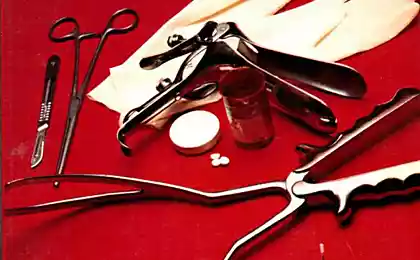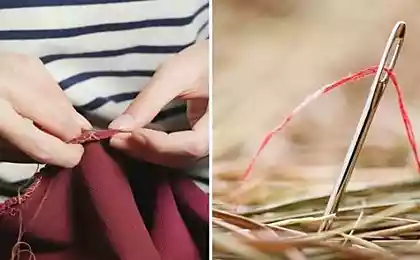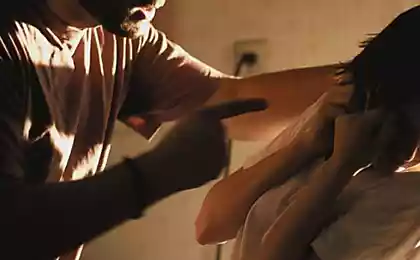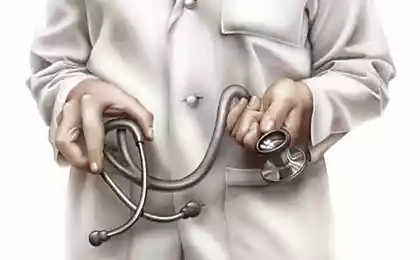154
"Sew for husband" or "How tight is it to sew your wife?" Many doctors willfully...
Terrifying "husband seam" It appears on women’s forums and in near-medical communities, where young mothers share with each other the horrors of childbearing. This seam — an extra stitch on the perineum after an episiotomy or natural birth rupture — is supposed to make intimate relationships after childbirth as enjoyable as before.

Some women in labor claim that they have suffered from this frightening procedure, while others consider the “sew for her husband” a kind of urban legend. "Site" It offers to find out what this seam is and whether it is actually practiced by our doctors.
According to some reports, this ill-fated phrase was first used in 1885 in one of the publications issued by the Texas Medical Association. In an article about an episiotomy, a story was told about a man who allegedly asked a doctor to make an extra stitch on the perineum of his wife who had just given birth.
Many argue that this was just a joke that doctors invented in less tolerant times to relieve postpartum stress in a young family. Like, well, let's add another stitch so that everything is beautiful and tight? A joke about an amateur, but, they say, many liked it.

The term “husband suture” gained considerable popularity in the 60-70s, when forced dissection of the perineum was carried out in most cases of vaginal birth. Gynecologists of that time were sure that episiotomy helps to reduce blood loss of a woman in labor, reduces the risk of fetal head injury and generally prevents the risk of natural ruptures during childbirth, which are much more difficult to sew up than artificial incisions.

She later used the term husband stitch in her book The First Year After Childbirth: Survival and Happiness of Motherhood. British Sheila Kitzinger. She wrote that this procedure helps to restore the shape and size of the vagina not only for cosmetic purposes, but also to enhance the pleasure of sexual intercourse in men and women.
The writer herself does not hide that she was subjected to this humiliating procedure in 1956 after the birth of her daughter. “The doctor asked my husband if he wanted my crotch to be stitched tighter, and since he could not find a response, the doctor made the decision on his own,” wrote Sheila Kitzinger.

In general, it is true or female fiction, it is difficult to understand. First, there are no special statistics on the quality of wound treatment after episiotomy and ruptures. And secondly, recovery It's a very individual question. Often, women themselves cannot objectively assess how they were imposed. sutures and tears.

And let mothers who have passed through episiotomy and tears, say that the ill-fated “sew for the husband” is to blame for unpleasant sensations during sexual intercourse, gynecologists do not get tired of saying: “Unpleasant sensations are quite normal at the beginning of the return to active sexual life after childbirth!”
The cause of unpleasant sensations can be a change in the hormonal background, and if the discomfort does not go away over time, it is worth thinking, and were the stitches after ruptures successfully applied?

Well, all these accusations, they say, “sew for the husband” – mocking a woman in the name of male pleasure, in fact have no right to exist. Even if you make additional stitches, it will not affect the degree of physical pleasure in a man. As you know, the muscles of the pelvic floor are responsible for pleasant sensations, but not the tightness of the entrance to the vagina.
The muscles, like the perineum, often weaken and lose tone during childbirth. And in the most severe cases, a woman who gave birth may even need surgical intervention, but certainly not in order to return the husband to the joy of sexual relations after the birth of a child. The purpose of such an intervention is to restore the gynecological health of a woman, and nothing more.

Some circumstances can overshadow the first weeks after the birth of a baby, and this is especially true of intimacy between new parents. In fact, everything is not as gloomy as it seems at first glance. After a few weeks, the hormonal background will return to normal, the muscles will tighten, and the pleasure of intimacy will be better than before!
And what do you think about the ill-fated "sew for a husband"? Be sure to talk to our editor in the comments.

Some women in labor claim that they have suffered from this frightening procedure, while others consider the “sew for her husband” a kind of urban legend. "Site" It offers to find out what this seam is and whether it is actually practiced by our doctors.
According to some reports, this ill-fated phrase was first used in 1885 in one of the publications issued by the Texas Medical Association. In an article about an episiotomy, a story was told about a man who allegedly asked a doctor to make an extra stitch on the perineum of his wife who had just given birth.
Many argue that this was just a joke that doctors invented in less tolerant times to relieve postpartum stress in a young family. Like, well, let's add another stitch so that everything is beautiful and tight? A joke about an amateur, but, they say, many liked it.

The term “husband suture” gained considerable popularity in the 60-70s, when forced dissection of the perineum was carried out in most cases of vaginal birth. Gynecologists of that time were sure that episiotomy helps to reduce blood loss of a woman in labor, reduces the risk of fetal head injury and generally prevents the risk of natural ruptures during childbirth, which are much more difficult to sew up than artificial incisions.

She later used the term husband stitch in her book The First Year After Childbirth: Survival and Happiness of Motherhood. British Sheila Kitzinger. She wrote that this procedure helps to restore the shape and size of the vagina not only for cosmetic purposes, but also to enhance the pleasure of sexual intercourse in men and women.
The writer herself does not hide that she was subjected to this humiliating procedure in 1956 after the birth of her daughter. “The doctor asked my husband if he wanted my crotch to be stitched tighter, and since he could not find a response, the doctor made the decision on his own,” wrote Sheila Kitzinger.

In general, it is true or female fiction, it is difficult to understand. First, there are no special statistics on the quality of wound treatment after episiotomy and ruptures. And secondly, recovery It's a very individual question. Often, women themselves cannot objectively assess how they were imposed. sutures and tears.

And let mothers who have passed through episiotomy and tears, say that the ill-fated “sew for the husband” is to blame for unpleasant sensations during sexual intercourse, gynecologists do not get tired of saying: “Unpleasant sensations are quite normal at the beginning of the return to active sexual life after childbirth!”
The cause of unpleasant sensations can be a change in the hormonal background, and if the discomfort does not go away over time, it is worth thinking, and were the stitches after ruptures successfully applied?

Well, all these accusations, they say, “sew for the husband” – mocking a woman in the name of male pleasure, in fact have no right to exist. Even if you make additional stitches, it will not affect the degree of physical pleasure in a man. As you know, the muscles of the pelvic floor are responsible for pleasant sensations, but not the tightness of the entrance to the vagina.
The muscles, like the perineum, often weaken and lose tone during childbirth. And in the most severe cases, a woman who gave birth may even need surgical intervention, but certainly not in order to return the husband to the joy of sexual relations after the birth of a child. The purpose of such an intervention is to restore the gynecological health of a woman, and nothing more.

Some circumstances can overshadow the first weeks after the birth of a baby, and this is especially true of intimacy between new parents. In fact, everything is not as gloomy as it seems at first glance. After a few weeks, the hormonal background will return to normal, the muscles will tighten, and the pleasure of intimacy will be better than before!
And what do you think about the ill-fated "sew for a husband"? Be sure to talk to our editor in the comments.
My husband said it was a restaurant! The first time I tried couscous, it turned out to be a delicious dish.
Reception of the club's jar without berries























